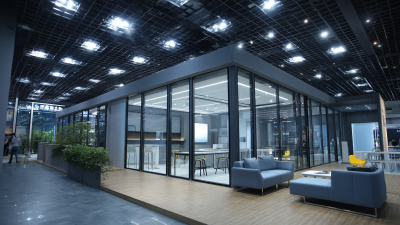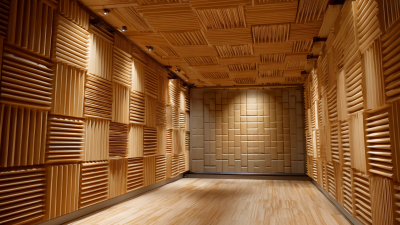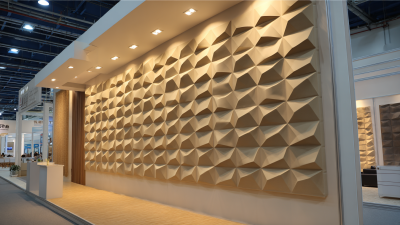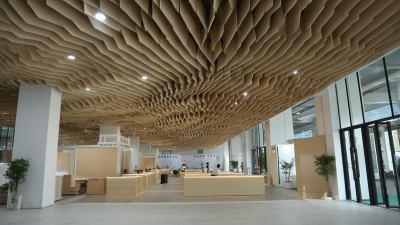Discover the Science Behind Sound Proof Panels: How They Transform Your Space into a Quiet Oasis
In today's fast-paced world, noise pollution is an increasingly common concern that can disrupt our peace and productivity. Enter sound proof panels, a revolutionary solution designed to transform any space into a serene oasis. These panels are not just effective at reducing unwanted noise, but they also enhance the overall aesthetic of a room. By utilizing advanced materials and acoustic engineering, sound proof panels absorb sound waves, preventing echoes and minimizing disturbances from the outside environment. Whether in a bustling office, a busy commercial establishment, or a home theater, these panels can make a significant difference in creating a tranquil atmosphere. This exploration delves into the science behind sound proof panels, examining how they function, their various types, and the numerous benefits they offer in improving our living and working spaces. Join us as we uncover the magic of sound proof panels and their role in cultivating quiet sanctuaries amidst the chaos of modern life.

The Science of Sound: Understanding Decibels and Their Impact on Noise Levels
Sound is measured in decibels (dB), a logarithmic unit that quantifies sound intensity. The threshold of hearing is 0 dB, while sounds above 85 dB can cause hearing damage with prolonged exposure. According to the World Health Organization, continuous exposure to noise levels above 65 dB can lead to adverse health outcomes, such as stress and sleep disturbances. This highlights the importance of effective soundproofing solutions, especially in urban environments where noise pollution is prevalent.
Soundproof panels are engineered to absorb sound waves, reducing the decibel levels within a space. Professional reports indicate that high-quality soundproof panels can decrease noise levels by up to 50%, transforming bustling environments into serene sanctuaries. For instance, an acoustic panel made of dense materials can effectively block sound transmission, hence minimizing the impact of outside chatter or loud machinery. As the demand for peaceful settings grows, investing in soundproofing technology becomes essential for enhancing productivity and well-being in both residential and commercial spaces.
Key Materials Used in Soundproof Panels: Analyzing Effectiveness and Cost
Soundproof panels are essential for creating quiet spaces, and their effectiveness largely depends on the materials used in their construction. Commonly, these panels are made from dense materials like fiberglass, foam, and mineral wool.
 Fiberglass panels, known for their excellent sound absorption properties, consist of tightly packed glass fibers that trap sound waves, preventing them from bouncing around a room. This makes them ideal for studios, theaters, and even home offices where sound clarity is crucial. The cost of fiberglass panels can vary, but they often represent a worthwhile investment due to their durability and high performance.
Fiberglass panels, known for their excellent sound absorption properties, consist of tightly packed glass fibers that trap sound waves, preventing them from bouncing around a room. This makes them ideal for studios, theaters, and even home offices where sound clarity is crucial. The cost of fiberglass panels can vary, but they often represent a worthwhile investment due to their durability and high performance.
Another popular material is acoustic foam, which is lightweight and easy to install. The unique structure of acoustic foam, featuring peaks and valleys, allows it to capture a wide range of sound frequencies. However, while it is often more affordable than fiberglass, its effectiveness may be less pronounced in very high or very low frequencies. Finally, mineral wool provides both sound absorption and thermal insulation, making it a favorite for multi-purpose spaces. Though it is generally more expensive than foam, mineral wool panels provide excellent soundproofing, making them a long-term solution for those serious about noise control in their environment.
How Soundproofing Reduces Stress: The Emotional Benefits of a Quiet Environment
Creating a quiet environment is essential for fostering emotional well-being. Noise pollution can lead to increased stress and anxiety levels, disrupting our focus and relaxation. Soundproof panels are an effective solution to transform your space into a calm oasis. By absorbing sound waves and preventing them from bouncing off surfaces, these panels minimize disturbances, allowing for a peaceful atmosphere that promotes better mental health.
Tips for enhancing the effectiveness of soundproofing include strategically placing panels in areas where noise is most intrusive, like home offices or bedrooms. Incorporating soft furnishings such as rugs and curtains can further dampen sound, creating a more serene environment. Additionally, consider using plants as natural sound barriers; they not only improve air quality but also add a soothing visual element to your space.
A quiet space enables deeper relaxation and better sleep quality, which significantly reduces stress levels. By investing in soundproof panels, you create a personal sanctuary that helps you recharge and maintain emotional balance. Prioritizing noise reduction is a vital aspect of self-care, ultimately enhancing your overall quality of life.

Installation Tips for Maximum Sound Absorption: Best Practices and Common Mistakes
When installing soundproof panels, adhering to best practices can significantly enhance their effectiveness in transforming spaces into quiet oases.
Research indicates that improper installation can reduce sound absorption by up to 30%, leading to frustrating outcomes and unnecessary expenses.
To maximize sound absorption, it's essential to consider the placement of panels. Experts recommend installing panels at first reflection points and ensuring a consistent air gap between the panel and the wall for optimal sound dampening.
Common mistakes include neglecting to assess the acoustics of the room before installation and failing to use high-quality adhesive materials. A recent report highlighted that many DIY enthusiasts overlook the importance of proper surface preparation, which can lead to peeling or reduced effectiveness over time.
Additionally, not taking into account the type of sound you'd like to minimize—whether it's airborne sound or impact noise—can compromise the project's success.
Understanding the specific acoustical needs of your space and adhering to professional recommendations can help avoid costly errors and achieve the desired tranquil environment.
Sustainability in Soundproofing: Eco-Friendly Options for a Quieter Space
When it comes to soundproofing, sustainability is a growing concern among homeowners and businesses alike. Eco-friendly options are now available that not only reduce noise but also minimize environmental impact. Materials such as recycled cotton, natural wool, and sustainable wood fibers are being utilized in the production of soundproof panels. These materials not only provide excellent sound absorption characteristics but are also biodegradable or recyclable, making them a responsible choice for conscientious consumers.
Incorporating these eco-friendly soundproofing solutions into your space allows you to create a quiet oasis without compromising the health of our planet. For example, panels made from reclaimed wood or recycled textiles help divert waste from landfills while enhancing your interior design. By choosing sustainable soundproofing materials, you can enjoy a tranquil environment that reflects a commitment to both comfort and ecological responsibility. This approach not only improves the acoustics of your space but also contributes to a healthier living and working environment for you and future generations.
Related Posts
-

Transform Your Space: The Surprising Benefits of Acoustic Ceiling Tiles Explained
-

Exploring Innovative Sound Deadening Panels at the 138th China Import and Export Fair 2025
-

What Are The Benefits of Installing Sound Panels for Walls?
-

Exploring the Market Trends of Sound Absorbing Wall Panels at 2025 China Import and Export Fair
-

Transforming Spaces with Wood Acoustic Panels at the 138th China Import and Export Fair 2025

